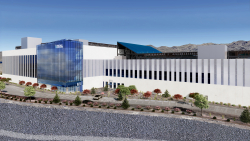The USS John F. Kennedy will not reach operational capacity until March 2027 at the earliest.
The second ship in the US Navy’s Ford-class was initially scheduled to be delivered this month. However, based on the service’s 2026 fiscal budget, the USS John F. Kennedy will not reach operational capacity until March 2027 at the earliest. This hefty delay follows a litany of timing issues associated with the service’s shipbuilding projects. From destroyers and frigates to aircraft carriers and submarines, nearly all of the service’s upcoming or next-generation projects have been hindered by roadblocks. To make matters worse, the future carrier USS Enterprise (CVN-80) is now set to be delivered a year and a half later than previously projected. The Ford-class vessel is currently under construction and is set to commission sometime in September 2029.
“We are behind in every ship class [by] different rates, but at least years,” Adm. James Kilby, the acting chief of naval operations, recently told the Senate Appropriations Subcommittee on Defense. Kilby added that the Navy is “laser-focused on China as our most consequential opponent” and stated that the service has set an “ambitious goal to make 80% of our ships, submarines and aircraft combat surge-ready by 1 January 2027.” In order to meet this timetable, issues including retention problems, supply chain issues, and budgetary constraints must be adequately addressed.
What’s Delaying the Ford ships?
The Navy’s newest aircraft carrier class features cutting-edge technologies that are impressive but are clearly going through some growing pains. According to the budget documents released by the Navy, the massive delay concerning the latest Ford ship is “to support completion of Advanced Arresting Gear (AAG) certification and continued Advanced Weapons Elevator (AWE) work.” Unlike its Nimitz predecessor, the Ford carriers incorporate an Electromagnetic Aircraft Launch System (EMALS) and Advanced Arresting Gear (AAG) designed to increase the maximum sortie rate on the carrier. The Nimitz ships are equipped with a steam catapult design, while EMALS uses electromagnetic technology to launch aircraft off the flight deck. According to the service, these new add-ons increase sortie rates by 25 percent and generate triple the power. While EMALS is now operational and considered to be a significant enhancement, the cutting-edge system faced developmental setbacks over the years. Additionally, the Ford-class’s electric elevators also faced issues during their design phase. Regardless of the time it took to introduce the lead ship of the class, USS Gerald R. Ford is currently underway on its second scheduled deployment.
Earlier this year, President Donald Trump pledged to rectify the roadblocks causing the Navy’s shipbuilding delays. A new office of shipbuilding within the White House is being planned in an effort to revive the shipbuilding industry. “We are also going to resurrect the American shipbuilding industry, including commercial shipbuilding and military shipbuilding.” The president added, “We used to make so many ships. We don’t make them anymore very much, but we’re going to make them very fast, very soon. It will have a huge impact to further enhance our national security.”
About the Author: Maya Carlin
Maya Carlin, National Security Writer with The National Interest, is an analyst with the Center for Security Policy and a former Anna Sobol Levy Fellow at IDC Herzliya in Israel. She has bylines in many publications, including The National Interest, The Jerusalem Post, and The Times of Israel. You can follow her on Twitter: @MayaCarlin.
Image: DVIDS.


















